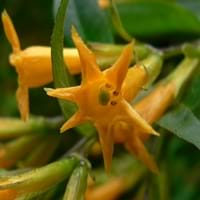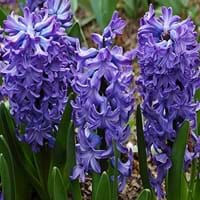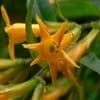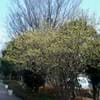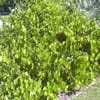Life Span
Perennial
Perennial
Type
Shrub
Bulb or Corm or Tuber
Origin
Central America, South America
Mediterranean, Western Asia
Types
not available
Not Available
Habitat
Temperate Regions
Mediterranean region
USDA Hardiness Zone
8-15
4-9
Sunset Zone
H1, H2, 16, 17, 21, 22, 23, 24
21,22
Habit
Arching/Fountain-shaped
Clump-Forming
Flower Color
Gold
White, Yellow, Red, Blue, Purple, Pink, Lavender, Violet
Flower Color Modifier
Not Available
Bicolor
Fruit Color
White
Not Available
Leaf Color in Spring
Green
Green
Leaf Color in Summer
Green, Dark Green
Light Green
Leaf Color in Fall
Dark Green
Several shades of Green
Leaf Color in Winter
Dark Green
Light Green
Leaf Shape
Lance-shaped to oblong
Long slender
Plant Season
Spring, Summer
Spring, Winter
Sunlight
Full Sun, Partial Sun
Full Sun, Partial Sun
Type of Soil
Loam, Sand
Loam
The pH of Soil
Acidic, Neutral
Acidic, Neutral
Soil Drainage
Well drained
Well drained
Bloom Time
Early Spring, Spring, Late Spring, Early Summer
Early Spring, Spring, Late Winter, Indeterminate
Tolerances
Drought
Black Walnut Toxicity, Rabbit, Shade areas
Where to Plant?
Ground, Pot
Container, Ground, Pot
How to Plant?
reseeds
chipping, Offsets, scooping, Twin scaling, Vegetative
Plant Maintenance
Medium
Low
Watering Requirements
Needs very little water
Medium
In Summer
Lots of watering
Lots of watering
In Spring
Moderate
Moderate
In Winter
Average Water
Average Water
Soil pH
Acidic, Neutral
Acidic, Neutral
Soil Type
Loam, Sand
Loam
Soil Drainage Capacity
Well drained
Well drained
Sun Exposure
Full Sun, Partial Sun
Full Sun, Partial Sun
Pruning
Prune regularly, Remove damaged leaves, Remove dead branches, Remove dead leaves
Remove damaged leaves, Remove dead branches, Remove dead leaves
Fertilizers
All-Purpose Liquid Fertilizer
All-Purpose Liquid Fertilizer, General garden fertilizer, Time release fertilizer
Pests and Diseases
Pests and diseases free
Pests and diseases free
Plant Tolerance
Drought
Black Walnut Toxicity, Rabbit, Shade areas
Flower Petal Number
Single
Single, Double, Semi-Double
Foliage Texture
Medium
Medium
Foliage Sheen
Glossy
Glossy
Attracts
Hummingbirds, Butterflies
Insects
Allergy
poisonous if ingested
Asthma
Aesthetic Uses
Cottage Garden, Farmland, Showy Purposes, Wild gardens
Beautification, Bouquets, Cottage Garden, Landscape Designing, Showy Purposes
Beauty Benefits
Not Available
Not Available
Environmental Uses
Air purification
Not Available
Medicinal Uses
No Medicinal Use
Not Available
Part of Plant Used
Not Available
Flowers
Other Uses
Traditional medicine
Decoration Purposes, Showy Purposes
Used As Indoor Plant
No
Yes
Used As Outdoor Plant
Yes
Yes
Garden Design
Foundation, Hedges, Mixed Border, Topiary, Bonsai, Espalier, Tropical
Bedding Plant, Container, Cutflower, Mixed Border, Rock Garden / Wall
Botanical Name
CESTRUM aurantiacum
Hyacinthus orientalis
Common Name
orange jessamine
Hyacinth, common hyacinth, garden hyacinth, dutch hyacinth
In Hindi
Cestrum aurantiacum
ह्यचीन्थ
In German
Hammersträucher
Hyazinthe
In French
Cestrum aurantiacum
jacinthe
In Spanish
Cestrum
jacinto
In Greek
Cestrum aurantiacum
υάκινθος
In Portuguese
Cestrum aurantiacum
jacinto
In Polish
Cestrum aurantiacum
hiacynt
In Latin
Cestrum aurantiacum
et hyacinthinas,
Phylum
Magnoliophyta
Magnoliophyta
Class
Magnoliopsida
Liliopsida
Family
Solanaceae
Liliaceae
Clade
Angiosperms, Asterids, Eudicots
Angiosperms, Monocots
Tribe
Not Available
Not Available
Subfamily
Not Available
Scilloideae
Season and Care of Cestrum aurantiacum and Hyacinth
Season and care of Cestrum aurantiacum and Hyacinth is important to know. While considering everything about Cestrum aurantiacum and Hyacinth Care, growing season is an essential factor. Cestrum aurantiacum season is Spring and Summer and Hyacinth season is Spring and Summer. The type of soil for Cestrum aurantiacum is Loam, Sand and for Hyacinth is Loam while the PH of soil for Cestrum aurantiacum is Acidic, Neutral and for Hyacinth is Acidic, Neutral.
Cestrum aurantiacum and Hyacinth Physical Information
Cestrum aurantiacum and Hyacinth physical information is very important for comparison. Cestrum aurantiacum height is 180.00 cm and width 150.00 cm whereas Hyacinth height is 10.20 cm and width 5.10 cm. The color specification of Cestrum aurantiacum and Hyacinth are as follows:
Cestrum aurantiacum flower color: Gold
Cestrum aurantiacum leaf color: Green
Hyacinth flower color: White, Yellow, Red, Blue, Purple, Pink, Lavender and Violet
- Hyacinth leaf color: Green
Care of Cestrum aurantiacum and Hyacinth
Care of Cestrum aurantiacum and Hyacinth include pruning, fertilizers, watering etc. Cestrum aurantiacum pruning is done Prune regularly, Remove damaged leaves, Remove dead branches and Remove dead leaves and Hyacinth pruning is done Remove damaged leaves, Remove dead branches and Remove dead leaves. In summer Cestrum aurantiacum needs Lots of watering and in winter, it needs Average Water. Whereas, in summer Hyacinth needs Lots of watering and in winter, it needs Average Water.
